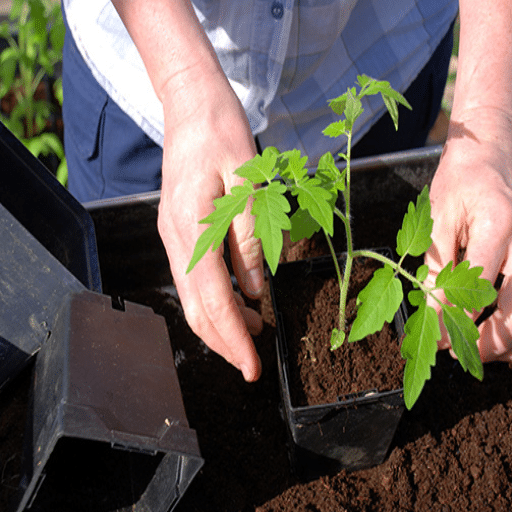Epsom salt is one of the most important mineral compounds for plants after natural elements. It is made of a distinctive constitution which makes it easy to tackle several issues concerning plant health by introducing essential nutrients that are lacking in soils. The article delves into how Epsom salt can be used while gardening and highlights multiple advantages that include stimulating seed germination as well as improving conditions for photosynthesis. We will also look at the best practices in using these salts to ensure that plants easily absorb them, maximizing their productivity and overall health. These dynamics, therefore, equip readers with the required skills to seamlessly integrate this organic additive into their gardening routines.
Understanding Epsom Salt’s Role in Plant Health
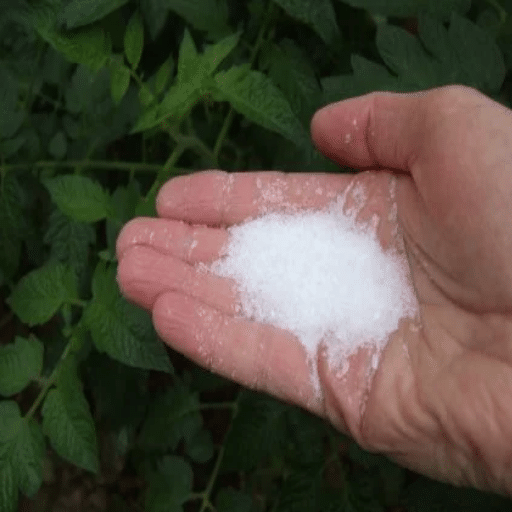
Epsom salt, magnesium sulfate (MgSO4), performs several crucial functions for the promotion of plant health basically as a result of its two compounds: magnesium and sulphur. Magnesium is a fundamental element in chlorophyll production, which drives the photosynthesis process essential for generating energy in plants. An adequate supply of magnesium could therefore lead to healthier leaves, stronger plants and more fruits. On the other hand, sulfur contributes to the formation of proteins and amino acids that represent an overall metabolic activity in plants. Essential oils and certain vitamins cannot form without it, thus influencing not only their development but nutritional properties as well. Additionally, Epsom salt improves nutrient uptake; it enhances phosphorus as well as nitrogen absorption by plants hence advancing their growth rates and resistance toward disease attacks. Gardeners need to understand these biochemical interactions if they want to use Epsom salt effectively to improve plant health and productivity.
The Science Behind Epsom Salt’s Composition
Epsom salt, also known chemically as MgSO4, is made up of two main parts- magnesium (Mg) and sulfate (SO4). Plants must have between 0.2% -0.5% of their dry weight consist of magnesium with this macronutrient being considered vital for healthy growth at such concentrations.It plays a major role in chlorophyll synthesis, which helps absorb sunlight, which is necessary for photosynthesis.In contrast, sulfur is involved in producing amino acids, proteins & enzymes, where the recommended concentration should range from 0.15%- to 0.25% per plant material.
The effectiveness or efficiency can be measured through solubility in water, whereby at room temperature, approximately 70 g/100 mL dissolves within a solvent consisting of water molecules.A similar event happens when an individual dissolves Epsom salt into water from where roots easily take them up.This rate may vary, although a popular suggestion is using one or two tablespoons per gallon of water for foliar or as a soil drench. It is ensured that both magnesium and sulfur are sufficiently supplied to plants to facilitate the crop’s growth of essential processes such as photosynthesis, nutrition uptake, and general plant health conditions by these parameters.
How Epsom Salt Affects Soil Chemistry
Epsom salt changes soil chemistry through mainly magnesium and sulfur, thus enhancing overall nutrient availability and improving soil structure. Magnesium helps to counteract the acidity of soils, which in turn increases their potential for supplying plants with necessary nutrients. Sulphate ions also enhance beneficial microorganisms activity in the ecosystem responsible for driving nutrient cycles in soils. Besides, presence of magnesium enhances the cation exchange capacity (CEC) leading to more nutrient and water retention within its structure. As a consequence, this combination makes it possible not only to create a healthier environment for plant growth but also increase the long-term sustainability of soil health.
Common Misconceptions About Epsom Salt in Gardening
An example of a common misconception I come across about Epsom salt is that it is an all-purpose remedy for plant-related problems. Although Epsom salt can be used as an important source of magnesium and sulfate ions, it should never be seen as an alternative means of achieving balanced fertilization.I have learned that some people believe that tomatoes with blossom end rot can benefit from the use of Epsom salts; instead, they usually suffer from calcium deficiency rather than lack magnesium levels, as most gardeners think. On top of that, many people imagine that Epsom salts work wonders on every type of growing; nevertheless, some plants require no extra supply of magnesium at all.It is, therefore, advisable to know about your particular plants before applying Epsom salts because excess usage leads to unbalanced nutrients present in the soil.
Identifying the Right Plants for Epsom Salt Application
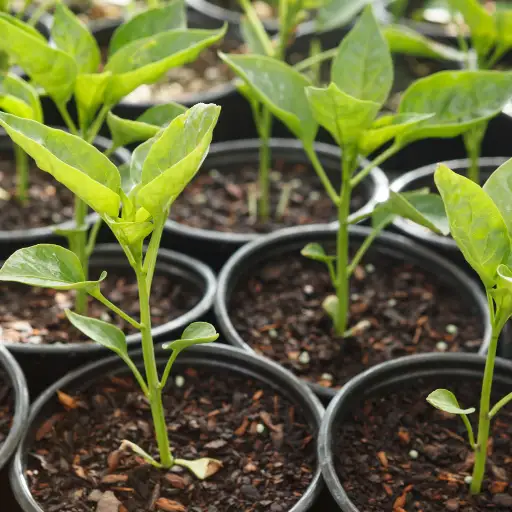
It is important to identify the right plants that will benefit from adding magnesium in Epsom salt. Usually, tomatoes, peppers, roses, and certain leafy vegetables like spinach and lettuce are generally magnesium-loving plants. For instance, yellow leaves or poor growth are probable signs of a plant suffering from magnesium deficiency; hence, it should be treated with Epsom salt. Nevertheless, it is recommended that you soil test prior to use in order to establish if the specific needs of the garden plant do require additional Magnesium at approximately 1 tablespoon per gallon of water during direct application. After that, always watch out for any over-usage tendencies as this leads to disturbances in nutrient balance.
What Plants Benefit Most From Epsom Salt?
- Tomatoes are a particularly responsive group of plants to Epsom salt, which can enhance fruit quality and prevent blossom end rot. The presence of magnesium facilitates chlorophyll formation, which improves leaf coloration.
- Peppers: Like tomatoes, extra magnesium could be very useful for peppers, improving their fruit set and overall fitness. Their application may result in bigger fruits.
- Roses: When exposed to Epsom salt, roses grow lush foliage and vibrant flowers. The magnesium in the salt helps roses become more resistant to diseases and pests by building stronger body structures.
- Spinach: This green leafy vegetable grows well after being fed with some magnesium, which makes it healthier and richer in taste due to effective photosynthesis enabling better growth.
- Lettuce: During the early development stage, lettuce greatly benefits from Epsom salts, just like spinach. Adequate magnesium provision ensures good growth and increases crispiness in leaves.
- Cucumbers: Using Epsom salt can enhance cucumber flavor and yield since it promotes chlorophyll production and influences plant growth.
- Fruit Trees: Magnesium application can assist in developing better fruit and disease resistance in several fruit trees like apple and citrus among others.
Signs That Show Your Plants Need Epsom Salt
- Yellowing Leaves: If your old leaves turn yellow but veins remain green, this indicates a lack of enough magnesium in the plant for the proper functioning of chlorophyll.
- Poor Fruit Development: A shortage of necessary nutrients, including Magnesium, may lead to smaller or fewer fruits being produced by your plants.
- Weak Growth: Stunted or weak growth in plants, with leaves appearing small or distorted, can indicate an insufficient magnesium supply that will affect their overall health and vitality.
- Blossom End Rot: This disorder is characterized by dark sunken spots on the bottom of tomatoes and peppers. It mainly results from inconsistent watering schedules coupled with a deficiency of various nutrients, such as magnesium.
- Curling Leaves: Curling leaves may signify a magnesium deficiency, especially when it affects new tissue. They roll inwardly, causing their edges to be crispy to save moisture through reduced evaporation from this surface area.
- Reduced Flower Production: Fewer flowers on flowering plants could be signs that they need Epsom salt to enhance blooming capacity through supplying them with essential active Magnesium compounds like Mg2+ ions.
Plants You Shouldn’t Use Epsom Salt With
- Cacti: These desert dwelling plants do not require extra magnesium because they are already adapted to low humidity environments. Too much can cause root rot.
- Succulents: They are similar to cacti as they like to be in less humid environments, and may not thrive when overfed. Their health can be affected if they take up too much water when Epsom salt is used.
- Ferns: In general, ferns require certain nutrients that are disrupted by the application of Epsom salts. Use in excess could result in leaf burn or other negative impacts.
- Carnivorous Plants: These plants, which grow best on infertile soils, need careful watering. The addition of Epsom salts will interfere with their fragile habitat and probably harm them.
- Plants in Poor Drainage: Using Epsom salt would worsen poor drainage conditions by causing root rot and other complications for many plants species in your garden.
Best Practices for Applying Epsom Salt to Your Plants
When you want to use Epsom salt on your plants, it is essential that you follow some dos and don’ts for the best results. Always dilute it in water before applying so as to avoid concentrated places, which can be harmful to your plants. A common ratio of 1 tablespoon of Epsom salt per gallon of water is suggested. Moreover, this solution should be applied during growing seasons like spring when new growth and flowering are expected. Thirdly, use it sparingly; once a month is usually sufficient for most plants. Finally, the soil should be well drained; otherwise, it will die with root rot since Epsom salt holds moisture. Keep an eye on your plants after application in case anything goes wrong.
How Much Epsom Salt Should You Use?
General recommendations for how much Epsom salt to add to your plants include adding one to two tablespoons per gallon of water.For specific uses such as nurturing flowering or vegetable crops about 1 tablespoon per foot of plant height may be used. Since this solution will be administered once every month within the season, nutrient uptake can be boosted and new leaves can form by its use.It is, therefore, important that you start with small amounts and then observe your plants closely to gauge their response to the fertilizer before adding more.
Methods of Application: Soil vs. Foliar Feeding
Soil application involves directly mixing Epsom salt into the soil or watering it in. Such an approach ensures the slow release of magnesium and sulfate ions, which in turn leads to better nutrient uptake by roots. Mostly, 1-2 tablespoons of Epsom salts are recommended to mix in the soil per plant, while others prefer doing applications at diluted solutions 1 tablespoon/gallon, thus ensuring the soil remains moist.
Alternatively, foliar feeding involves spraying diluted Epsom salt solutions onto plant leaves. It acts as a quick fix, especially when there is a deficiency in magnesium, among other minerals. The recipe for a typical foliar application involves mixing 1 tablespoon of Epsom salt in a gallon of water then spraying the leaves during the evening hours to avoid leaf burn from the sun. According to plant requirements and responses, foliar applications should be repeated after 4-6 weeks throughout the growing season.The two methods have their own pros and cons with regards to specific plant needs and environmental conditions.
Timing the Application for Optimal Results
For best results when applying Epsom salts, I focus on timing my treatments based on the stage at which my plants are. It is most effective to apply Epsom salts at the beginning of growth when new green leaves become visible. This application period covers early development stages where magnesium is needed most by my plants. In addition, I make it a habit to check out my crops regularly; if I discover that they have yellowing foliage or stunted growth somewhere in midseason, then I will remember to employ this quick fix by spraying diluted feed upon them.For this reason, I always make sure that applications take place either early morning or late evening so as not to expose the foliage to direct sunlight stress, leading to its damage.
Enhancing Plant Growth with Epsom Salt
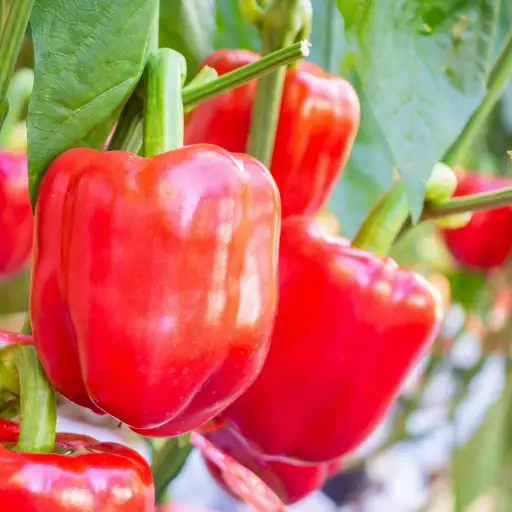
There are a lot of benefits to plants from Epsom salt. It is responsible for a specific magnesium level, which is necessary for healthy plant growth. This means that it will boost photosynthesis activities in plants leading to better looking yields at the end. Most especially when used as soil drench, this solution can cure yellow leaves and dwarfed growth all of which are symptoms of low magnesium levels. In addition, it improves the intake of essential elements like nitrogen and phosphorus resulting in more robust root formation as well as superior flowering and fruiting. Epsom salt should be applied early during the growing season or used as foliar feed to ensure that this vital nutrient reaches the plants when they require them most. By following this practice, plants get strengthened and become capable of withstanding stress factors and diseases.
Elevating Magnesium Levels for Healthier Plants
To raise magnesium levels for healthier plants, a soil test must first determine if the mineral is deficient. If so, Epsom salts can be applied either through the soil or by spraying on top. Mix about one tablespoon of Epsom salts per gallon of water then soak the ground around your crops if you want to apply it to farm fields via soil method. For quicker uptake, misting leaves with a solution containing one tablespoon of Epsom salts in a gallon of water can serve as a foliar spray. Moreover, including compost rich in magnesium or planting crops such as leafy greens known for their high-magnesium content could also improve soil supply levels further. Henceforth, keep monitoring the effect on crops and adjusting accordingly.
Enhancing Flowering and Fruiting
To enhance flower development and fruit set in plants they must get enough nutrients such as phosphorus (P) and potassium (K). Additionally, good watering regimes that prevent crop stress due to environmental conditions lead to higher yields. For example, applying a phosphorus-rich fertilizer during the flowering stage boosts flower production. Routine pruning also helps in directing more energy towards the fruit and improving air circulation thereby reducing instances of diseases. Finally, proper selection of plant varieties that are most suitable for blooming and providing adequate sunlight will result in improved productivity through more flowers and fruits.
Supporting Plant Health and Resilience
The creation of an appropriate growing environment where all plants needs are addressed is necessary to support good plant health and resilience. This should involve regular soil testing for nutritional deficiencies and amendments with organic matter, watering appropriately without overdoing it, as well as planting resistant crops to pests. Also, crop rotation and companion crops can help to fight against pests and diseases while providing a diversity of species on the farm. Regular monitoring for pests or diseases coupled with strategies like integrated pest management contributes towards having a healthy plant ecosystem. Lastly, they become sturdy and hence thrive when provided with enough sunlight besides being shielded from extreme weather conditions.
Troubleshooting Common Issues with Epsom Salt Usage
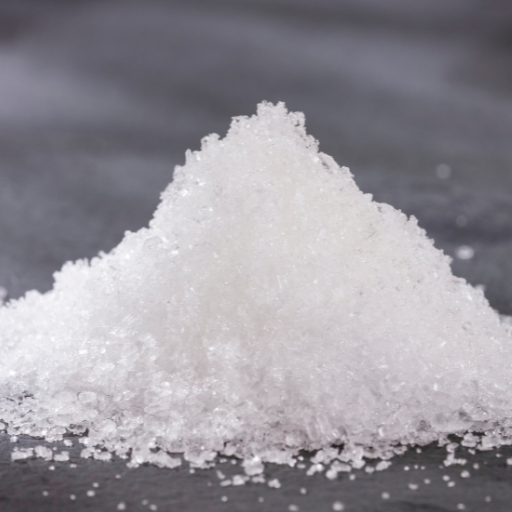
Several common issues can arise when using Epsom salt in gardening. A significant one is over-application, which can lead to an imbalance in soil nutrients, particularly magnesium and sulfur. It is important to adhere to recommended guidelines as excessive amounts hinder plant health and growth. Also, it could be misunderstood that Epsom salt entirely replaces fertilizers; however, in reality, it works well as a supplement for a regular fertilizer schedule. Finally, some plants may not do well with Epsom salts, like those thriving in acidic soils; hence, specific requirements of the plant must be put into consideration. Lastly, remember to water properly after applying to ensure Epsom salt dissolves adequately and reaches plant roots effectively thereby avoiding any leaf burn.
Recognizing Overuse and Its Effects on Plants
Over-usage of Epsom salt has several negative implications on plants. First, I would look out for such signs as yellow leaves or stunted growths, even burning of the leaves, indicating that the plants are not taking up nutrients properly because there is too much magnesium causing this condition. Recommend applying 1-2 tablespoons per gallon of water every 4-6 weeks all through the growing season for optimum results with this product.
It should be noted that the ideal soil pH range should be between 6.0 and 6.8 so as to get optimal nutrient absorption because low acid conditions or high alkaline circumstances could affect nutrient availability negatively. Also, it’s imperative for me to remember that there might be signs of a nutrient lockout if excess amounts of Epsom salt are utilized, considering certain plants that thrive on nutrient-packed soil best prefer them for their planting needs. To avoid these problems, I try striking a balance between using Epsom salt along with a total fertilization regimen but still checking fertility levels regularly.
Balancing Epsom Salt with Other Fertilizers
When balancing other fertilizers with Epsom salt, the specific nutrient needs of plants must be considered. For example, Epsom salt mostly contains magnesium and sulfur, which complement the Nitrogen and Phosphorus usually present in most fertilizers. The ideal range for this application rate is typically 1-2 tablespoons per gallon of water with an interval of 4-6 weeks during the growing season.
A balanced fertilizer containing an NPK ratio (nitrogen, phosphorus, potassium) of 10-10-10 works well for nitrogen.
Additionally, it is important to maintain a soil pH between 6.0 and 6.8 for optimum absorption of nutrients in the soil. This is particularly important for nutrient lockouts as some plants thrive best in nutrient-rich soils. Regular tests on soil samples will enable you to know already existing levels of nutrients and pH which can help in making adjustments on both Epsom salt and fertiliser applications too lastly it’s good to take care of the plants by observing them closely so as to see if there are any deficiencies or toxicities that may require alteration in your routine so as to sustain healthy balance.
Addressing Soil Imbalances and pH Considerations
- Soil pH: Most plant species grow optimally within a pH range of 6.0 -7.0 where below this range indicates acidity that hampers the availability nitrogen and phosphorus among other essential nutrients while at about 7.5 ph makes iron together with manganese less available due to alkalinity thus lime or sulfur would adjust accordingly either by raising or lowering it respectively
- Macronutrients: Optimal levels must be maintained for primary macronutrients namely; nitrogen (N), phosphorus (P) and potassium (K). A recommended NPK ratio is 10-10-10, but these ratios depend on the type of plants. For example, leafy vegetables may derive much benefit from a higher level of nitrogen, e.g. 15-5-10, than flowering plants, which may require slightly increased phosphorous.
- Micronutrients: These include iron, manganese, zinc, and copper. Soil testing can help identify the absence of these elements, and subsequent application of micronutrient solutions in chelated form can be used to adjust these imbalances.
- Organic Matter: Adding organic substances like compost or well-decomposed manure can improve soil structure and enhance nutrient retention. These substances also promote microbial activity essential for nutrient cycling.
Integrating Epsom Salt into Your Regular Gardening Routine

Your gardening routine can be enhanced and plants become healthier if you include Epsom salt. To use Epsom salt effectively, dissolve about a tablespoon of it in each gallon of water and then apply this mixture to your plants once every month in the course of the growing season. This method offers magnesium and sulfur, which are needed for photosynthesis and nutrient uptake. You could also sprinkle approximately one tablespoon at the base of each plant and work it into the soil for soil application. Epsom salts have benefits, especially on tomatoes, peppers, and roses, by preventing blossom-end rot as well as improving flowering. If you put a little bit of Epsom salt in your fertilization program, you would optimize nutrient availability while helping your plants build resistance against factors that could stress them thus causing serious harm.
Seasonal Adjustments for Epsom Salt Application
Plant growth cycles must dictate how we use Epsom salt when making applications for different seasons.
- Spring: Apply Epsom salts during early growth, when plants begin to push through dormancy. Initially, use 1 tablespoon per gallon so that enough magnesium gets into your leaves for healthy leaf development.
- Summer: During summer months, continue with monthly applications since they are still in their active growth season. Consider that high-demand plants such as tomatoes and peppers may need more frequent applications, say biweekly, especially during flowering or fruiting stages, which require more nutrients.
- Fall: As they prepare for dormancy, start cutting down on application rates until the end of summer or early fall, when the last dose should be given to harden them up before winter while storing up nutrients needed for next year’s growth.
Soil magnesium levels need to be monitored through testing to achieve optimal absorption levels; falling within 25-50 ppm is recommended. Otherwise, adjust accordingly based on these findings since too much magnesium can result in an imbalance of nutrients. By synchronizing the use of Epsom salt with seasonal patterns, one can achieve the healthiness and vigor of plants all year round.
Long-Term Benefits of Regular Epsom Salt Use
Using Epsom salt in my gardening activities has greatly improved plant health and vitality over the years. There is also an increase in fruiting and flower development as well as rich blooms due to the production of chlorophyll by magnesium contained in Epsom salt, which makes the leaves greener and flowers vibrant. It is also said to help plants take up vital nutrients from the soil hence boosting their resistance against pests and diseases. The increased availability of nutrients in soil seems to have led to tastier fruits and vegetables. By including Epsom salt, I have seen how simple it can be to improve my garden’s productivity for a long duration of time.
Reference sources
-
HGTV
- Source: HGTV
- Summary: This article discusses how generations of gardeners have used Epsom salts to help their plants grow bushier, produce more flowers, and have better color.
-
Epsom Salt Council
- Source: Epsom Salt Council
- Summary: The Epsom Salt Council explains how Epsom salt helps seeds germinate, makes plants grow bushier, produces more flowers, increases chlorophyll production, and deters pests.
-
This Old House
- Source: This Old House
- Summary: This article explores the potential benefits, risks, and effective usage of Epsom salt in the garden, providing a balanced view on its application.
Frequently Asked Questions (FAQs)
Q: Can Epsom salt be used for all types of plants?
A: Epsom salt is beneficial for many plants, especially those that are magnesium-deficient, but it should be avoided for certain species that are sensitive to magnesium or sulfur.
Q: How often should I apply Epsom salt to my plants?
A: The frequency of application depends on the plant type and its specific needs. Generally, applying Epsom salt every 4-6 weeks during the growing season is recommended.
Q: Can I mix Epsom salt with other fertilizers?
A: Yes, Epsom salt can be mixed with other fertilizers, but it’s important to balance it with the plant’s overall nutrient needs to avoid over-fertilization.
Q: Is Epsom salt safe for use on edible plants?
A: Epsom salt is safe for edible plants like vegetables and fruit trees when used in the correct amounts, as it is a natural mineral compound that can improve plant health and yield.
Q: How do I know if my plants need Epsom salt?
A: Plants showing signs of magnesium deficiency, such as yellowing leaves or stunted growth, may benefit from Epsom salt. Soil testing can also help determine the need.
Q: Can Epsom salt help with pest control in the garden?
A: While Epsom salt is not a direct pesticide, its use can strengthen plant health, making them more resilient to pests and diseases.
Q: Should Epsom salt be used in potted plants the same way as in the garden?
A: Potted plants can benefit from Epsom salt, but the dosage should be reduced due to the confined space and potential for nutrient buildup.
Q: Does Epsom salt work immediately on plants?
A: Epsom salt can have both immediate and long-term effects. Some benefits, like improved leaf color, may be seen quickly, while others, like enhanced growth, take time.
Q: Can I use Epsom salt during every watering?
A: Using Epsom salt during every watering is not recommended as it can lead to nutrient imbalances. It’s best to apply it periodically based on the plant’s needs.
Q: What are the signs of Epsom salt overuse on plants?
A: Overuse of Epsom salt can lead to salt buildup in the soil, causing leaf burn, wilting, or inhibited plant growth. Reducing the frequency or amount can mitigate these effects.



